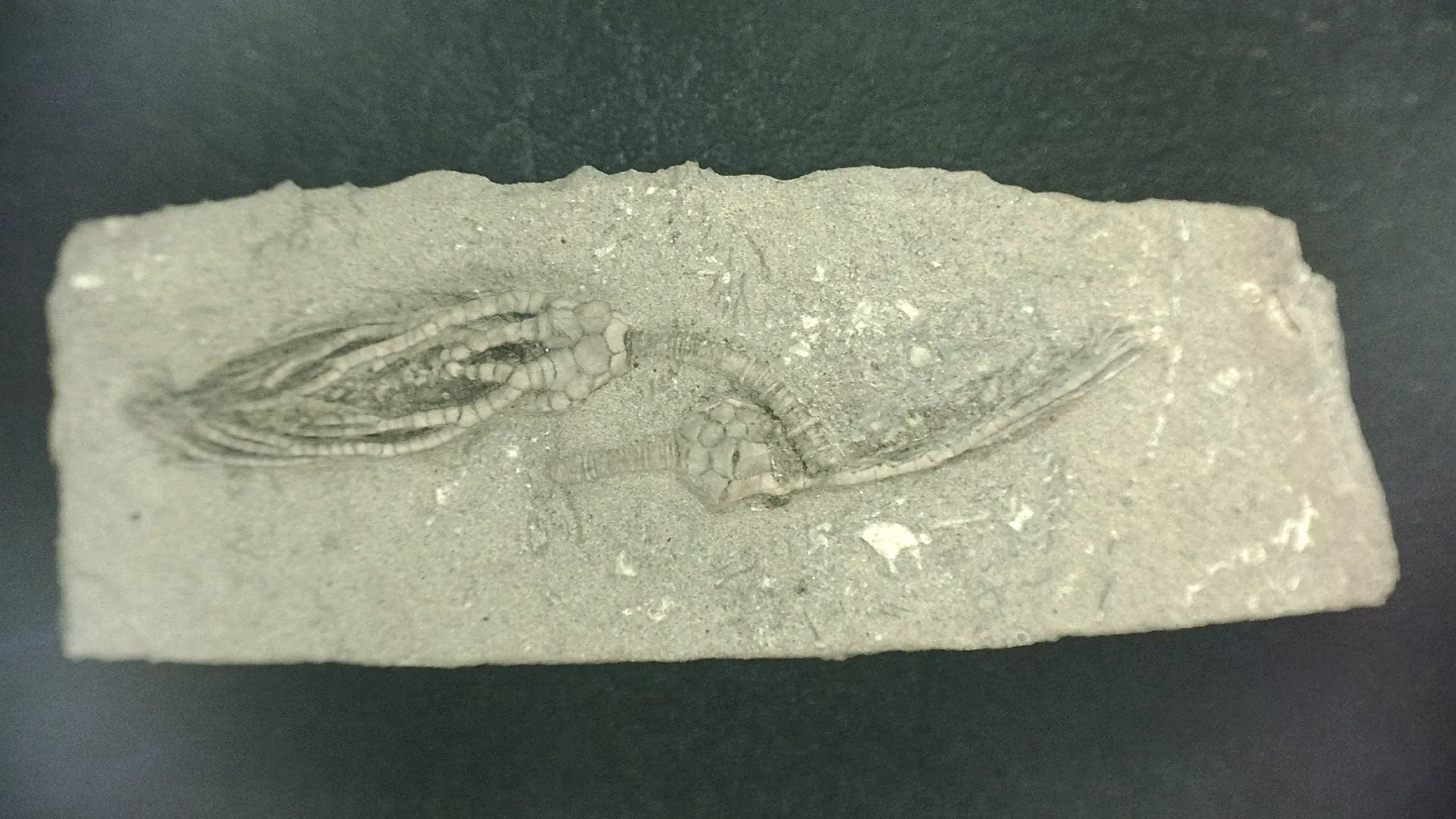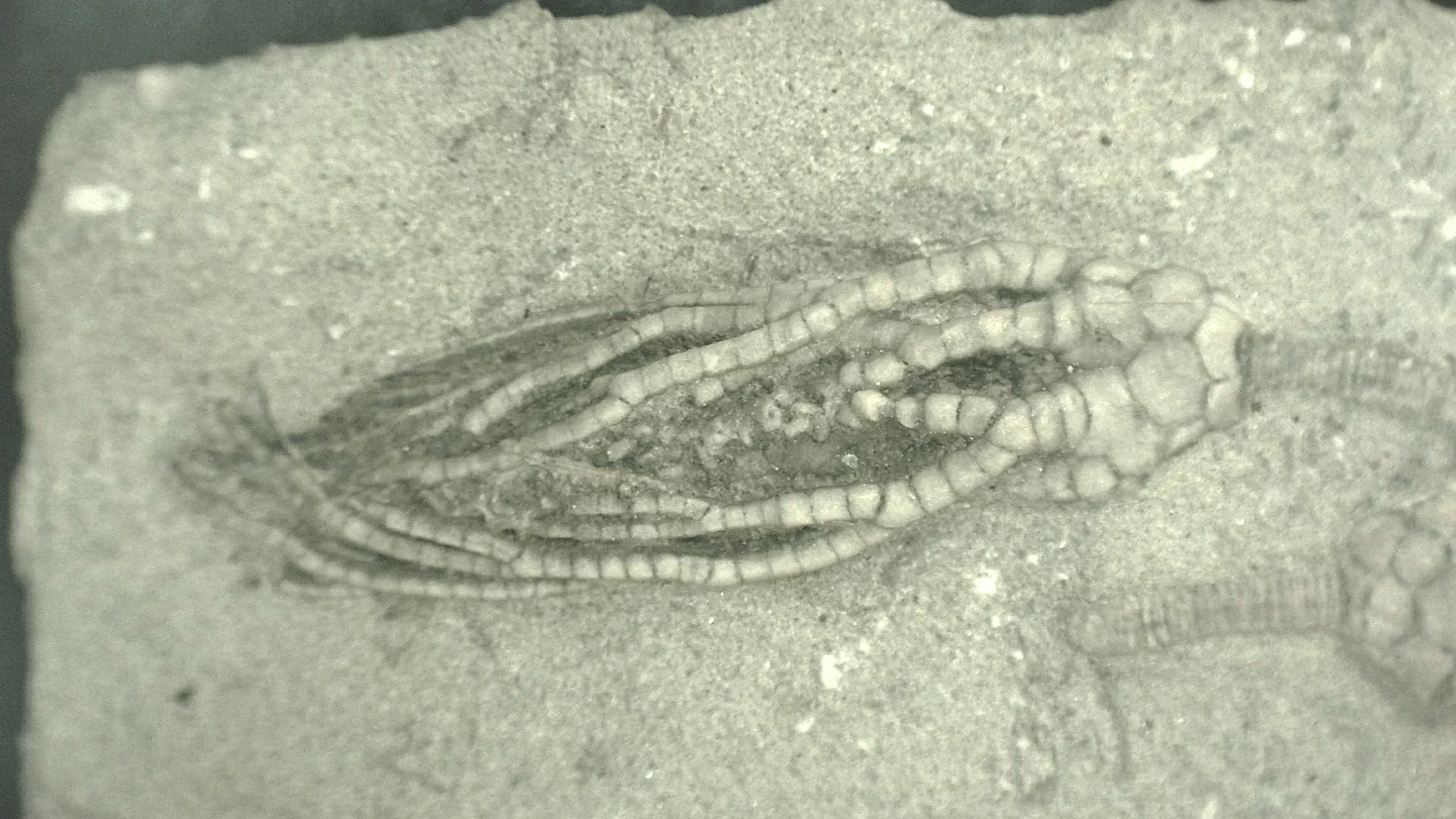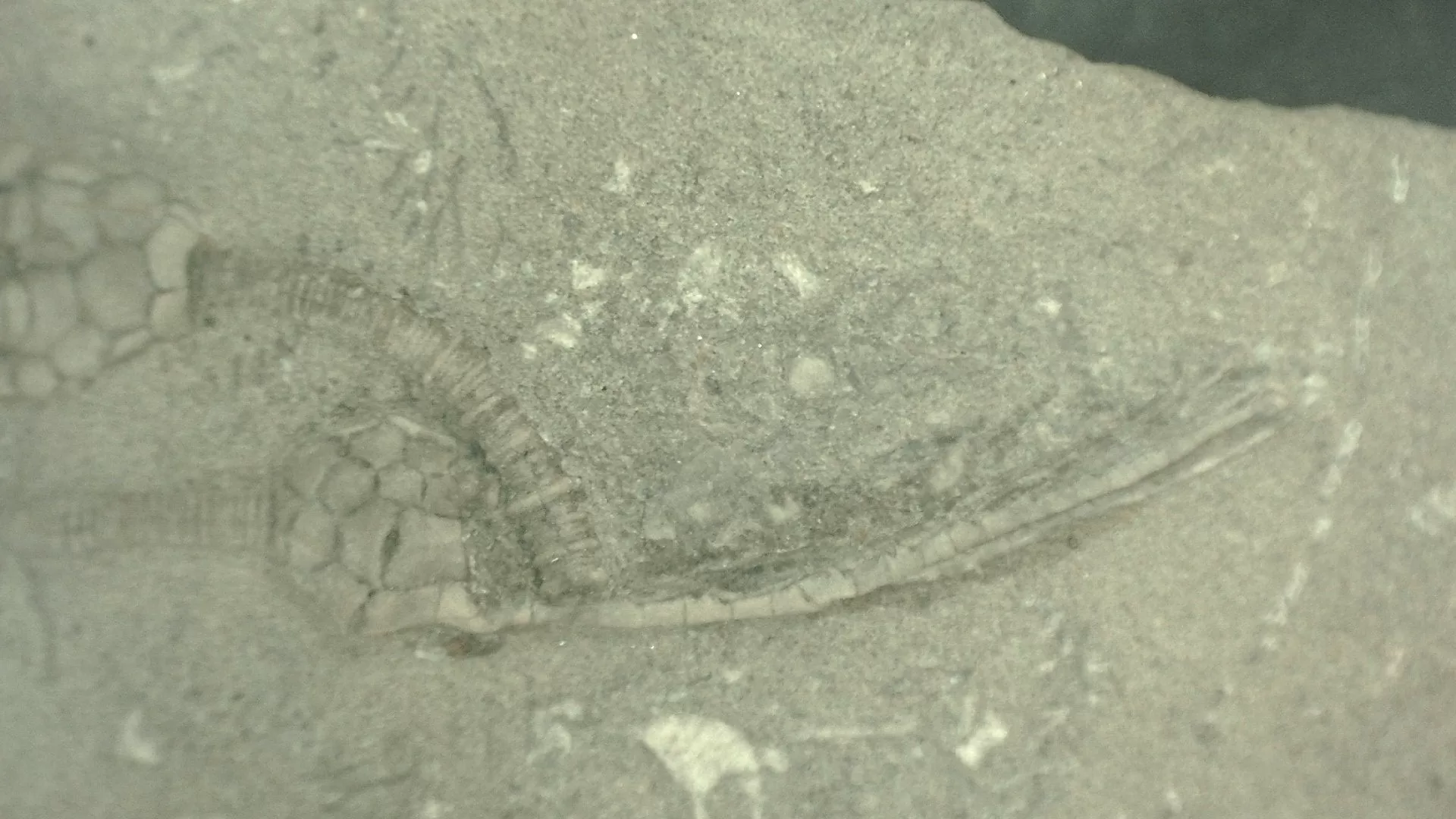Description
Indiana Crawfordsville Crinoid
- Species: Histocrinus coreyi & Parisocrinus crawfordsvillensis
- Mississippian Age (299 – 359 Million Years Old)
- Edwardsville Formation
- Crawfordsville, Indiana
- This exquisitely prepared and highly detailed crinoid has been expertly prepared and sits on it’s natural matrix that measures 2.70″ long
- More Crinoids for Sale
Indiana Crawfordsville Crinoid
ARE CRINOIDS A SEA LILY?
Because of their “flower like” appearance, crinoids have been referred to as “sea lilies”, but do not be fooled: they are in fact animals. Crinoids belong to the phylum Echinodermata.
WHAT DID CRINOIDS EAT?
Crinoids are passive suspension feeders, filtering plankton and small particles of detritus from the sea water flowing past them with their feather-like arms. The arms are raised to form a fan-shape which is held perpendicular to the current.
WHAT MAKES CRAWFORDSVILLE CRINOIDS SO SPECIAL?
Crawfordsville Indiana is known for its spectacular crinoid faunal assemblage. There are more than 60 species of crinoids among more than 40 genera found in the Crawfordsville area. Seafloor conditions in the Crawfordsville area were obviously vary favorable to the proliferation of crinoids, an environment that had both shallow water conditions and an influx of silt from a neighboring delta.
Mississippian Age crinoids from Crawfordsville, Indiana, are known worldwide for their completeness, abundance, comparatively large size, and extraordinary aesthetic appeal.








